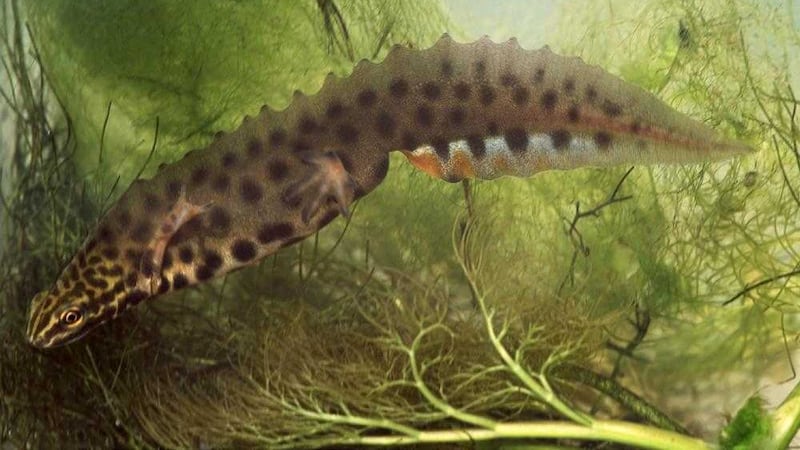THE name ‘mankeeper’ is frequently used in rural Ireland for our only resident newt, the smooth or common newt (Triturus vulgaris) an amphibian which is found in lowland ponds and ditches from spring onwards.
Neither folklorists nor naturalists are certain about the name’s origin, though it may well be linked to the many superstitious tales surrounding the lizard-like animal. The Irish name for the newt is ‘alp luachra’ which translates as a 'ferocious little creature’ and a glance through neighbouring words in Dinneen’s Irish dictionary suggests many other sinister associations.
Some believe ‘mancreeper' or 'manleaper’ may have been the original names used and that these derived from the belief that a newt would creep down the throat of anyone who slept near water. Living as a parasite in the person’s stomach, the newt would feast and hatch a brood of young newts there, causing severe starvation.
The only cure was for the person to eat a meal of salty bacon and lie close to the water where within minutes the thirsty newts would move all the way to the person’s mouth and slide out into the water!
Smooth newts migrate to ponds in spring, having wintered on land in dark, damp hideaways. Both male and female are brownish/black above and have striking yellow/orange bellies mixed with distinctive black spots. This colouration is most prominent during the breeding season when the male also develops a crest along its back.
On their return to water, they begin an elaborate courtship ritual with the male racing in front of the female, vibrating his tail before depositing a small bag of sperm on the pond floor. If the female is receptive, she moves over the sperm and picks it up with her cloaca for internal fertilisation.
Soon the female will lay her eggs individually, up to a few hundred, and wrap each one inside a plant leaf. The newt tadpoles are like miniature versions of their parents with the addition of feathery gills protruding from their heads. Like the adults the young newts are entirely carnivorous.
They spend the summer in ponds eating anything from water shrimps to worms and frog tadpoles. Unlike the parents who leave the water by mid summer, the young newts remain until August or September when they lose their gills and then emerge to begin life on land.
During the autumn and winter the newts will come out on damp nights from stones and logs to hunt for worms and slugs. The urge to return to water will not come until the following spring.
The curious belief that someone licking a newt’s belly bestowed on the person a cure for burns and bruises may have its origins in the Classical myth of the ‘fireproof’ salamander which was immune from the effects of fire. The newt is a member of the larger salamander family and its bright yellow flame-like stomach markings may also have encouraged this belief which held that the cure was then applied by the spit of the licker to the affected area of burn.
Shakespeare involves the newt with other colourful ingredients in Macbeth when, at the start of Act IV, one of the play's three witches recites the infamous recipe:
Eye of newt, and toe of frog,
Wool of bat, and tongue of dog,
Adder’s fork, and blind-worm’s sting,
Lizard’s leg, and howlet’s wing
While it doesn't sound the most appetising, the witches' potion summons up spirits that propel Macbeth along his doomed path. That sinister newt again, no doubt.



